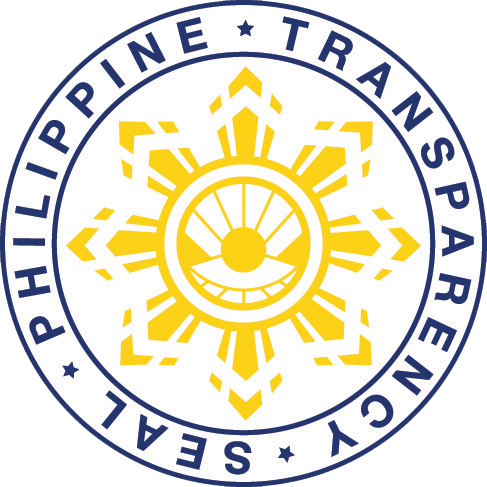Mr. Chairman, partners in development, colleagues in the disaster risk reduction and management practice, fellow environmentalists, friends.
I am deeply honored and happy to be here, and I thank you all for making me feel so at home.
For a while, I felt the weather would not permit me to come to this conference at all. But it would have been quite a shame if after assuring John Roome here last year that I would love to come, mere ice on the streets would keep me out. Indeed it is still freezing out there, but the warmth of your welcome makes one forget even the most severe bite of winter.
Hollywood’s latest reading of the Mayan calendar says the world as we know it will end in 2012.
We may thus appear curiously naive in coming here at the beginning of 2011 in the hope of trying to avert what may already be written in the stars. But we have long learned to live with such predictions and scares.
The state of our planet---makes this session on disaster and risk management doubly significant for all those who look to the World Bank for leadership.
Our knowledge of past disasters do not let us predict what lies ahead, what major disaster will strike next, whether it be floods, blizzard, avalanche, tsunami, tornado, cyclone, storm, earthquake, volcanic eruption, wildfire, contractible disease, or anything else. All we know is that we have to work doubly hard at preventing, reducing, and mitigating disaster risk.
We have to offer our constituents the level of protection they expect, particularly from government.
Disasters, when they occur, hit the poorest and the most vulnerable the hardest. They can wipe out, in an instant, gains toiled for over years, and thwart even the most widely shared millennium development goals.
Not all disasters are a result of natural hazards. Some are regrettably man-made: the outcome of faulty development patterns, short-sighted policies and unwise investments that expose communities to undue vulnerabilities. As climate change intensifies, the severity and frequency of natural hazards in many places also increases. But poverty and the lack of capacity to respond routinely and unduly magnify the risks. The incredibly wasteful and polluting manner of living, which many moderns have come to equate with modernity, further exacerbates the same.
To reduce the vulnerability of communities, especially those exposed to a wide range of hazards, disaster risk reduction and management must be the pivotal element in the development process. Where community vulnerabilities interface with development obstacles, opportunities for disaster risk reduction could be identified. Sufficient policy space should enable participatory local planning to mitigate disaster impacts across sectors and turn the huge ship of development towards a safer and more sustainable course.
For nearly a quarter century, as chief executive of Makati City which is the Philippines’ financial district, I set my course by that star. Makati City today is the richest, most financially stable and independent local government unit in the Philippines. Over 40 percent of the top 1,000 corporations in the country, a total of 60,551 business firms, 86 embassies and 12 international organizations are headquartered in Makati.
This is the part of Makati that is familiar to everyone. We have our problems too. Certain areas of the city are subject to yearly flooding and unstable soil, among other things. And just as honey attracts bees, prosperity attracts migrants from all over. Versus the Philippine average population density of 313 per square km., Makati’s density is nearly 20,000 per square kilometer making it one of the most densely populated cities in the world.
But Makati is most certainly ahead of most other cities in mitigating the problems of congestion, poverty, pollution, climate change and natural disasters.
Our efforts have been recognized all over the world. The World Bank, the global facility for disaster reduction and recovery, and the international strategy for disaster reduction, cited Makati, in a primer published in 2008 on climate resilient cities. The primer recognized Makati’s “strong institutional mechanisms for facilitating action on climate change and disaster risk management."
In a south-south partnership, Makati City is sharing with Quito and Kathmandu, its experience in areas such as risk sensitive land use planning and emergency management.
The Makati City disaster risk reduction and management coordination council (mcdcc) is in charge of disaster risk planning and management, while the Makati City Environmental Protection Council (MCEPC) is in charge of environmental and climate change issues. Aside from Makati City officials, these two bodies also include representatives from national government agencies as well as civil society organizations as permanent members.
Makati owes its success to the fact that its initiatives are "rooted in dedicated and often cooperating departments,” as the primer puts it. Leadership is shared, and bottom-up initiatives are encouraged. This frame of management is vital, and its long-term benefits cannot be overstated.
Most importantly, our citizens, who are the potential victims in any emergency, are the city’s first allies and resources in any disaster risk reduction and management activity.
They do not only participate but ultimately own such activity.
This means going down to the grassroots- the village or, barangay, and planning with the villagers and training them to implement the risk reduction and management programs they themselves want.
We have likewise invested heavily in support systems to insure fast-reacting institutional arrangements.
Analysts at our command and control center constantly monitor and analyze early warning signs, identify vulnerability hotspots, and deploy resources when disasters occur and monitor and coordinate rescue and relief operations.
Reducing disaster risks also means shifting economies towards low-carbon growth pathways. This is why Makati promptly adopted the climate-friendly cities initiative of the institute for climate and sustainable cities, a project more popularly associated with the ejeepneys. The city is determined to produce more electricity to charge batteries from green sources, such as organic waste streams linked to the wet markets and food establishments and anaerobic biodigesters, and other renewable energy technologies.
Makati built its first public charging station for electric vehicles in 2008 and the forward-looking mayor of Makati, who is here with us today, is set to launch in the first quarter of 2011 another Makati green route - exclusive to electric public utility transport – which goes through the city's historic heritage district. The idea is simple – it is to utilize what a locality already has.
I rose to my current role in the country’s national leadership on the wings of my performance as a local government executive.
In my new role, I will do no less than what I did in Makati, but in the larger, national scale.
This is why---if you will allow a short personal vignette---on the day of my oath-taking as vice president, I did not ride the standard limousine secured by a battery of bodyguards. I rode one of the locally-made electric jeepneys plying the streets of Makati.
An environmental activist drove and two boy scouts, two senior citizens, two students and two professionals---none of them armed---acted as my security escorts.
Disaster risk reduction and management has become a major focus for the Philippine government with the enactment of the Disaster Risk Reduction and Management (DRRM) act in 2010. The law replaced the previous system that puts emphasis on emergency relief and response. The law enhances the mandates of national and local institutions dealing with disaster and encourages pre-disaster actions.
The disaster risk reduction and management act reformed national and local calamity financing by permitting funding support not just for ex-post responses such as relief and recovery, but also for ex-ante related disaster risk reduction actions such as preparedness, prevention and risk mitigation.
In addition to the disaster risk reduction and management law, the Philippine government has also adopted the strategic national action plan for disaster risk reduction, which lays down our priorities to comply with the Hyogo framework of action over the next decade.
Both the law and the action plan benefited from extensive consultations with partners, stakeholders, and development partners.
It is also important to note that a climate change act has been put in place, complementing our disaster risk reduction policy framework. Both disaster risk reduction and management and climate change laws call for the harmonization of our national and local policies, priorities, and programs on disaster and climate risk reduction.
The biggest challenge moving forward is to how implement these laws, particularly at the local level. While national agencies are mandated to mainstream risk reduction actions in their specific sectors, local governments are mandated to assume all these functions at the provincial, city or municipal levels.
In this effort, the international community, especially the World Bank, has a big role to play in making sure that development interventions of today do not cause disasters in the future. Greater collaboration is needed, particularly in retrofitting infrastructure, capacity-building, strengthening institutions, establishing early warning systems, improving natural resource management practices, updating building codes, and urban planning.
It is vital that infrastructure investments are able to withstand surprises and long-term risks, given the long-term challenges.
With respect to long-term risks, I sincerely believe opportunities to collaborate include investments in long-term systems for information collection, the development of means for public engagement and mechanisms.
That can continuously update plans based on changes on the ground, and the deployment of decision-making tools to help analyze the implications of long-term risks.
The Philippines has been privileged to count on the World Bank as an enduring partner in its development journey. In particular, the global facility for disaster risk reduction and recover has been very aggressive in helping us establish a robust disaster risk reduction program. As the head of the country’s housing and urban development agencies, I am particularly interested the in promoting safe land use and human settlements. I hope I can continue to count on our partnership on these two areas and more, as we try to create a safer and gentler world.
Thank you very much and good morning.


